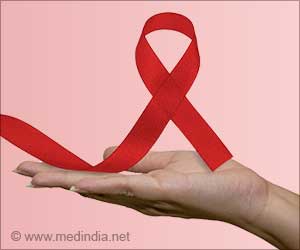Whatever his other failings, US President George Bush’s $15 billion dollar AIDS relief plan has shown remarkable results.
George W Bush might be one of the most unpopular US presidents ever. His Iraq and healthcare policies might even be considered heartless by most. Still at least in one instance he has bettered himself, say observers. And that is on the AIDS front.
Nearly five years later, the President’s Emergency Plan for AIDS Relief — Pepfar, for short — may be the most lasting bipartisan accomplishment of the Bush presidency, says SHERYL GAY STOLBERG writing in The New York Times.So far, roughly 1.4 million AIDS patients have received lifesaving medicine paid for with American dollars, up from 50,000 before the initiative.
Announced in the 2003 State of the Union address, the plan called for $15 billion for AIDS prevention, treatment and care, concentrating on 15 hard-hit nations in Africa and the Caribbean. An enthusiastic Congress has already approved $19 billion.
Mr. Bush is pressing for a new five-year commitment of $30 billion. He will travel to Africa in February to make his case — and, the White House hopes, burnish the compassionate conservative side of his legacy.
Despite the effort, there are still 33 million people living with H.I.V., and the United Nations estimates that there were 1.7 million new infections in 2007 in sub-Saharan Africa alone.
Critics are particularly incensed by the requirement that one-third of the prevention funds be spent teaching abstinence, despite a lack of scientific consensus that such programs reduce the spread of H.I.V.
Advertisement
Yet the institute concluded that, over all, the program had made “a promising start.” And when they step back, even critics concede that Bush spawned a philosophical revolution. In one striking step, he put to rest the notion that because patients were poor or uneducated they did not deserve, or could not be taught to use, medicine that could mean the difference between life and death.
Advertisement
In Uganda, a country already far along on its own AIDS initiative when Mr. Bush began his, 110,000 people are under treatment, and 2 million have H.I.V. tests each year, up from 10,000 treated and 400,000 tested before, according to Dr. Alex Coutinho, a top AIDS expert there. The money comes mostly from Pepfar, but also from a United Nations fund to which the United States contributes.
The goals set out by Bush in 2003 were ambitious: to treat 2 million people, prevent 7 million new infections and provide care for 10 million, including orphans and other children considered at risk, over five years, beginning in 2004 when the money became available.
The prevention targets will not be measured until 2010. But Dr. Mark Dybul, Mr. Bush’s global AIDS coordinator, says the program is on track to meet its goals. In addition to drugs for 1.4 million, the government says it has provided care for nearly 6.7 million people affected by the disease, including 2.7 million orphans and other children. Drugs provided to pregnant women have spared an estimated 152,000 infants from infection, the government says.
Some AIDS experts say the money could be spent more efficiently. Yet the fight is not over whether to reauthorize the program, but how. Much of the money has been channeled through American religious-based organizations, drawing criticism from people like Dr. Coutinho of Uganda, who say local control would cut costs.
Citing the current infection rate, advocates say $50 billion is needed, not $30 billion as Mr. Bush has proposed. “Unless Pepfar is reauthorized at a much higher level,” Dr. Alex Coutinho warned, “we are going to be in the business of playing God.”
Source-Medindia
GPL/N










